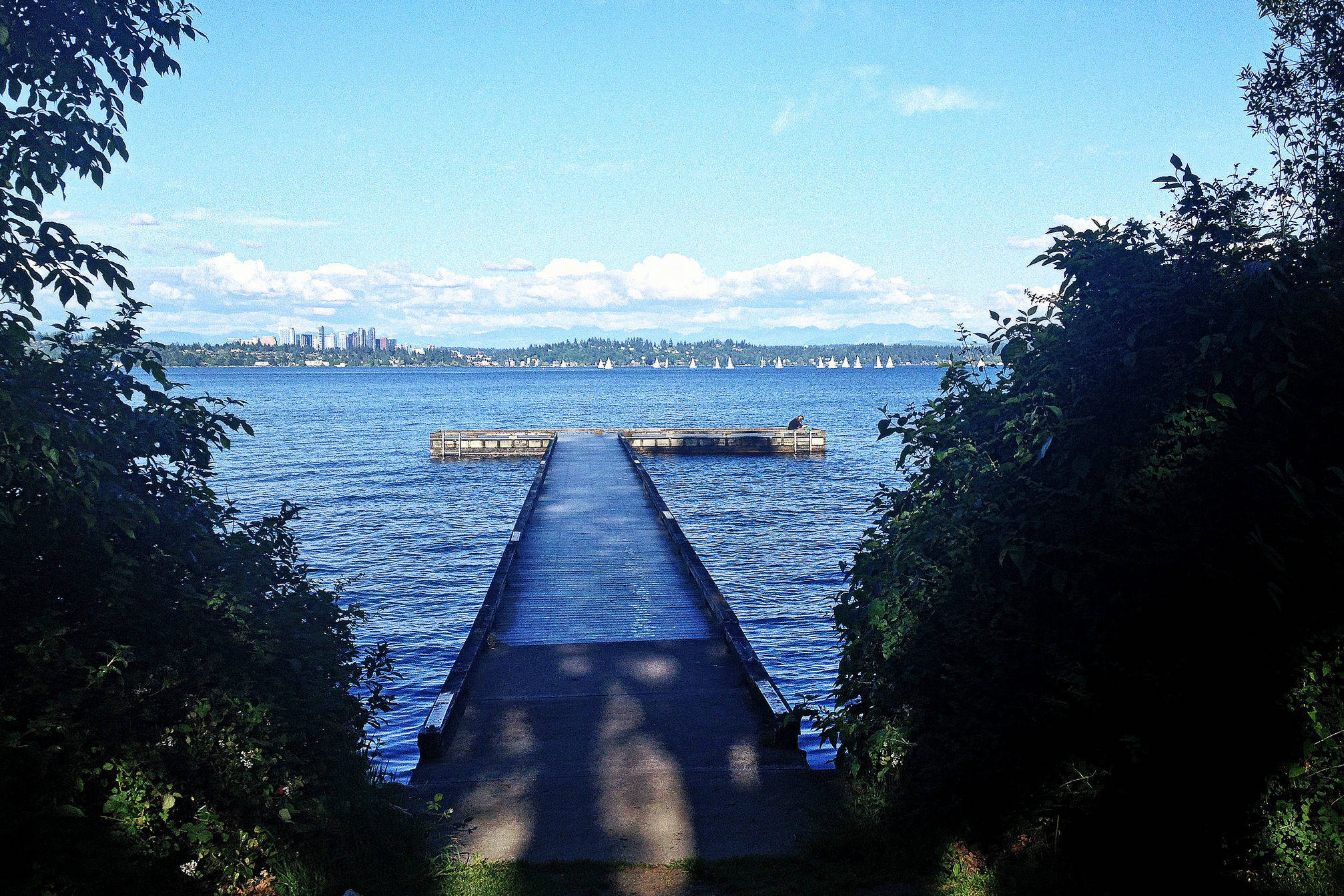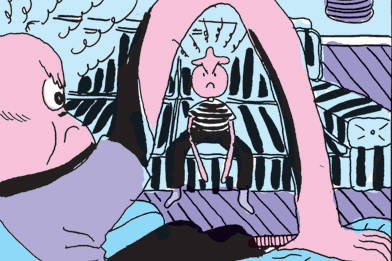In February, 235 million gallons of Seattle poopwater (or, more politely, “wastewater”) spewed into Puget Sound. The catastrophic spill occurred after two of the four pumps at the West Point Treatment Plant in Discovery Park failed at the absolute worst time—just as wastewater coming in had reached maximum capacity due to flooding from steady rains. For three days, the brown stuff—mostly storm water mixed with a hearty dash of sewage—gushed into the waters, closing surrounding beaches and emitting an unholy odor that took park-goers by surprise.
The West Point overflow was one of the most dramatic examples of what now feels like an annual occurrence in Seattle: a whole lot of poop making an unsolicited guest appearance in our waterways. In 2015, it was 12,000 gallons from an underground sewage storage tank flooding into Lake Washington and shutting down Seward Park. In 2016, a popular video on Reddit (which you can view below) depicted a strange churning gyre in Elliott Bay just off Myrtle Edwards Park that ended up being a pool of, you guessed it, overflowing sewage. The same year, blog Wallyhood discovered to its surprise that Wallingford and Ballard were “the biggest offenders when it comes to combined sewer overflows of raw untreated sewage” in Seattle, where it is released into busy Lake Union.
Seattle is an incredible place to take a floaty out on the water and enjoy the summer sun, but in 2017 should you be concerned about what else is floating alongside you?
In the case of West Point—if you were to imagine Puget Sound as a giant toilet—UW professor of environmental and occupational health sciences Scott Meschke says you can take solace in this fact: “The Sound flushes very, very well.”
“The discharge to the Sound from West Point was in the very deep bottom chamber,” Meschke says. The sewage that gushed into the sea those messy three days in February got sucked deep, deep down into the water and, thanks to strong currents, whooshed out to the ocean in a timely fashion.
“The dispersal of the overflow was actually really quick,” says King County Wastewater Treatment Division’s communications specialist Annie Kolb-Nelson. “It was gone within days.”
Aside from the depth of the Sound and its strong currents, sewage also doesn’t pose a huge threat in our marine waters because they are salty and cold—an inhospitable environment for the fecal bacteria that might make us sick. But that’s not necessarily the case in our lakes, which are freshwater, lacking in those handy flushing currents, and considerably warmer. “It doesn’t have the dispersion and the salinity and the super-cold temperature. That’s a little bit more worrisome,” Kolb-Nelson says.
Lake Washington was actually once a significant case study for the dramatic effects human effluent can have on water quality. Thanks to steadily increasing amounts of urban sewage flowing into the lake from the 1940s on through the early ’70s, what’s now one of the city’s most cherished swimming holes was a smelly, phosphorus-laden breeding ground for darkened, rotting algal blooms.
Nowadays, thanks to a considerable increase in sewage-treatment standards and processes, that’s not the case. But as 2015’s spill demonstrated, poop is still a factor. “It’s really about waiting it out,” Kolb-Nelson says. “The same bacteria that we use in our biological process in our treatment plant, those same bacteria exist in our local waterways—our lakes—and they do break down those pollutants.”
Yet, even after the Department of Ecology and the Department of Public Health declare fecal coliform and bacteria levels low enough for human contact, it can be unsettling to swim while wondering where exactly all that lake sewage went all of a sudden. “What you’ve got is basically dilution and mixing occurring in that lake water,” Meschke says. “That’s probably the major attenuator. Then you’ve got settling, getting down into the sediments at the bottom of the lake where they’re less of an exposure risk.”
But why does poop get into the water in the first place? There is waste from geese, pets, and occasionally little kids, of course, but the biggest contributor is the result of combined sewer overflows. Seattle’s sewer system is a relic of an outdated early-20th-century design that carried human sewage, horse sewage, and stormwater through the same single pipe straight into the Sound. “Obviously we don’t do that anymore,” Kolb-Nelson says, “but the whole reason the combined sewer system is still in use is because when it rains really heavily, that stormwater has to have a place to go, otherwise it will back up in homes and businesses.” That “place to go” ends up being local waterways. But Seattle and King County are some of the most aggressive in the country when it comes to controlling CSOs—Seattle plans to have them completely tamped down by 2025. And on June 10, the Wastewater Division is celebrating the completion of a one-million-gallon storage tank that will keep stormwater and sewage from overflowing in local waters near West Seattle’s Lowman Beach Park.
“There are risks out there, but nature helps us, and Seattle’s doing a good job,” Meschke says. “But obviously, if there’s a big CSO blowout, I wouldn’t go swim in front of the CSO.”
ksears@seattleweekly.com








